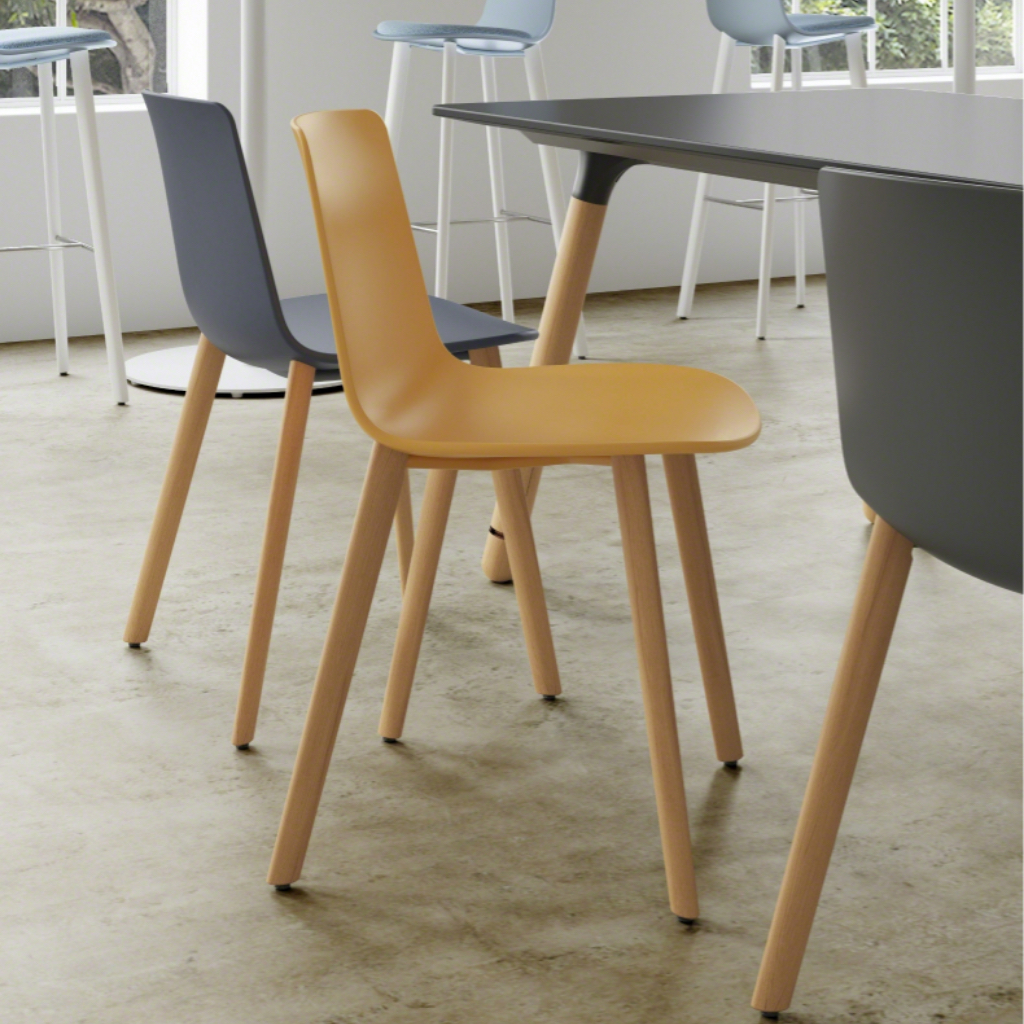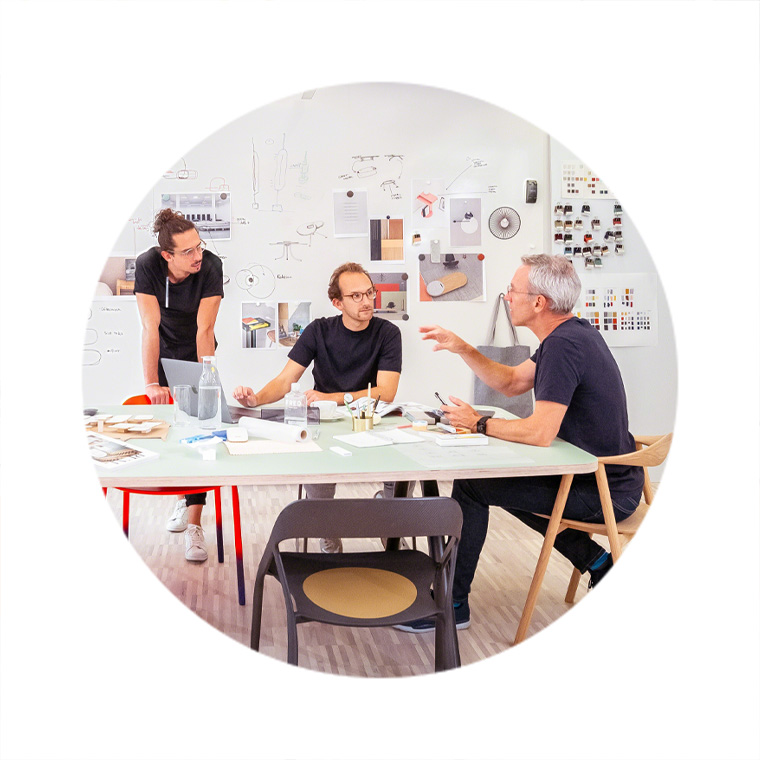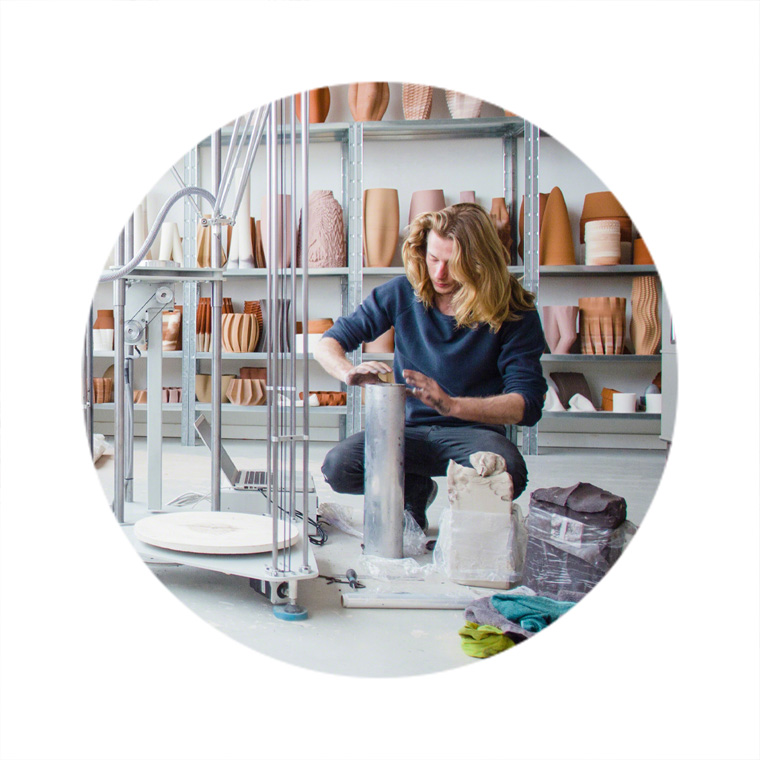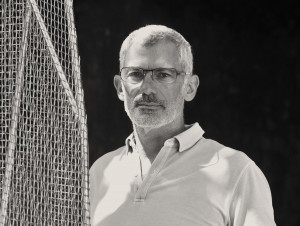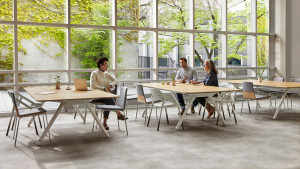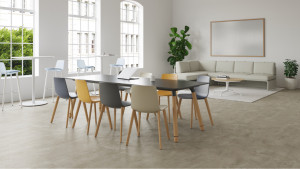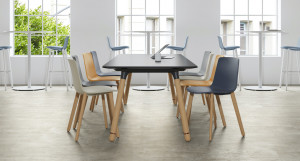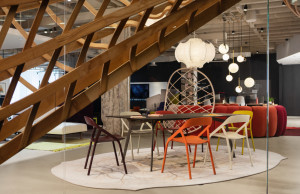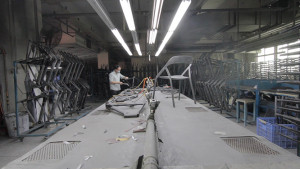The Making of the Carbon Fiber LessThanFive Chair
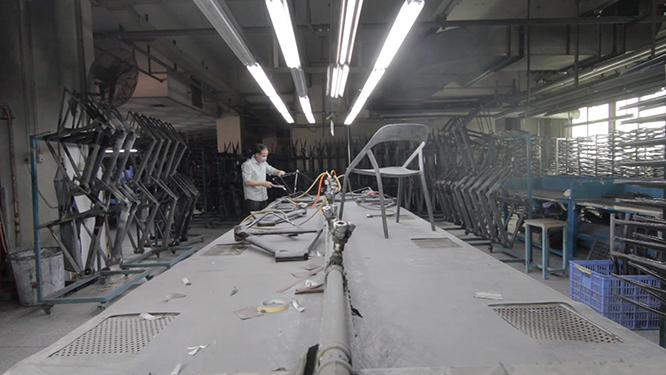
Learn more about the LessThanFive Chair from one of the engineers who helped develop it, Mike Dettloff, who shares his thoughts on bringing this groundbreaking product to market.
Had you ever worked with carbon fiber before?
I have never had the opportunity to work with carbon fiber before, nor did I expect to work with it at Coalesse.
As the project team and I dove into the material, I was truly surprised at how available carbon fiber has become as an industrial material and even for consumer use. Anyone with a few simple home tools can create relatively complex objects out of the fabric-like layers.
However, to create repeatable structural components, such as the LessThanFive Chair, we had to dive deep into the field and partner with material experts to find the right fiber strength, orientation, matrix and layering that could be combined to meet our demands.

Layers of carbon fiber are carefully placed to construct the LessThanFive Chair.
How did you educate yourself on the material?
I learned the most during the testing and validation of early samples. The stress on a bike frame (a traditional application of carbon fiber) is obviously different than that of a chair. By creating controlled experiments in the test lab, I was able to experience how the material reacts when stressed.

Image from a stress test on the LessThanFive chair.
Talk about the impact of the material on the engineering and manufacturing process. How did it differ from that of other products?
Although the raw materials are readily available, specific carbon fiber “recipes” are still largely considered proprietary information. This lack of transparency makes it difficult to develop an understanding and even more difficult to ensure long-term quality.
Our team sought out to fully understand the physical object that resulted from the process, and tasked our supplier with tweaking the construction to meet our changing demands. This required testing over 100 chairs to characterize how a good product responds to extreme use scenarios.

Did you try some things that had to be adjusted because they would be too costly or complex to manufacture?
This product broke ground in many ways – not to mention the carbon fiber itself!
Very little was left on the cutting room floor. The product was envisioned as an exploration into the material, and the project team took great care to avoid all unnecessary complexities and maintain the simple and clean form. It would have been easier to use more traditional materials in key features of the product. However, the frame today consists of 100% carbon fiber with no inserts or internal supports.

Is the LessThanFive Chair being manufactured by a company who has worked with carbon fiber before?
Our supplier is a veteran in the carbon fiber industry. They started by manufacturing wood tennis rackets in the 1980s, and over time they have transitioned to high-performance sporting equipment, made exclusively with carbon fiber.
The bike frame technology specifically pushed the level of innovation and performance at the supplier, and examples can be seen throughout the LessThanFive Chair. Stacking bumpers under the seat are made of the same material as chain-stay protectors on mountain bikes.

What else did you find interesting or unique about engineering this product?
My favorite part about engineering this project was the internal buzz that the chair generated around Steelcase. Everyone wanted to know the details and tell me their favorite finish. Whenever the product was tested, people would stop, watch and take bets on how it would do!

The LessThanFive Chair is available in 6 standard finishes.
Did the new material require any new procedures or testing to prepare it for market?
This is actually the area of engineering where we have experienced the most growth in our product design process. The team developed new models for understanding product performance by involving more reliability engineering. Our goal was to understand more with less given the cost and time required to build a chair. Through this analysis, we were able to set high product performance expectations at the lowest possible development cost.

The LessThanFive engineering team.

